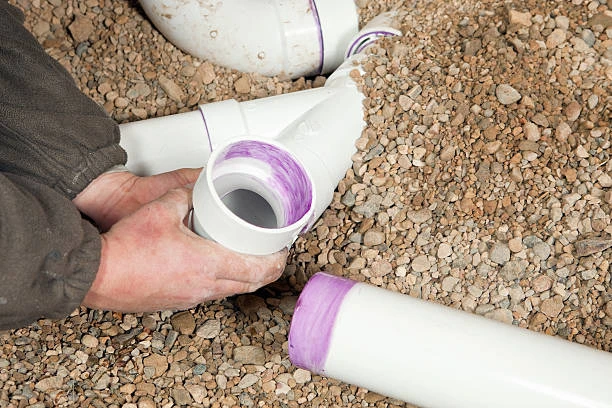In the realm of plumbing, (cross-linked polyethylene) PEX fittings have become a popular choice for both professionals and DIY enthusiasts. Their flexibility, durability, and resistance to corrosion make them ideal for various applications. In this article, we’ll explore PEX fittings, their types, installation processes, advantages, challenges, and much more, ensuring you have all the information you need to make informed decisions.
What Are PEX Fittings?
PEX fittings are essential components used to connect PEX pipes in plumbing systems. They create a secure, watertight seal, allowing for efficient water flow and pressure management. Understanding the different types of PEX fittings is crucial for effective plumbing installations.
Types of PEX Fittings
1. Crimp Fittings
How They Work: Crimp fittings use a metal ring that is crimped onto the pipe using a special tool. This process ensures a tight seal.
Advantages:
- Durable and reliable
- Widely available and commonly used
Disadvantages:
- Requires specific crimping tools
- If not crimped correctly, leaks can occur
2. Clamped (Cinch) Fittings
Mechanism of Action: These fittings use a clamp to secure the connection. A cinch tool tightens the clamp around the PEX pipe.
Pros:
- Easier installation in tight spaces
- No need for a crimping tool
Cons:
- May not provide as strong a connection as crimp fittings
- Requires a specific cinch tool
3. Push-Fit Fittings
Features: Push-fit fittings allow for quick connections. You simply push the PEX pipe into the fitting, and internal seals hold it in place.
Benefits:
- No tools required for installation
- Easy to disassemble for repairs
Drawbacks:
- Generally more expensive
- Requires a snug fit for effectiveness
4. Expansion Fittings
Installation Process: These fittings require an expansion tool to expand the end of the PEX pipe before inserting the fitting. As the pipe contracts, it forms a tight seal.
Key Benefits:
- Creates a strong, permanent connection
- Ideal for larger diameter pipes
Materials Used in PEX Fittings
PEX fittings are made from various materials, including brass, plastic, and polybutylene. The choice of material affects the durability, cost, and resistance to corrosion.
Why Material Choice Matters
- Durability: Different materials offer varying lifespans.
- Cost: Material type can influence overall project costs.
- Performance: Some materials may handle pressure better than others.
Installation Process for PEX Fittings
Tools Required
To install PEX fittings, you will need:
- PEX cutter
- Crimp or cinch tool
- Measuring tape
- Deburring tool
Step-by-Step Installation Guide
- Cut the PEX Pipe: Use a PEX cutter to make a clean cut.
- Deburr the Edges: Remove any burrs from the cut edge to prevent damage to the fitting.
- Insert the Fitting: Push the fitting into the pipe until it reaches the stop.
- Secure the Connection: Use the appropriate tool (crimp or cinch) to secure the fitting in place.
- Check for Leaks: After installation, turn on the water and check for any leaks.
Common Mistakes to Avoid
- Not cutting the pipe straight
- Failing to deburr the edges before installation
- Over-tightening the fittings, which can lead to damage
Maintenance and Care for PEX Systems
Although PEX systems are low-maintenance, regular checks can help prevent issues:
- Inspect for Leaks: Regularly check fittings and pipes for signs of leaks.
- Monitor Water Pressure: Unusual changes in pressure can indicate issues.
- Protect Against Freezing: Ensure that PEX pipes are properly insulated in colder climates.
Advantages of Using PEX Fittings
Flexibility and Ease of Installation
PEX fittings can bend around corners, reducing the need for additional fittings. This flexibility makes installation faster and easier.
Resistance to Corrosion and Scale
Unlike metal pipes, PEX does not corrode, ensuring a longer lifespan and less maintenance.
Cost-Effectiveness
PEX is generally more affordable than copper or other piping systems, making it a cost-effective choice for both new installations and repairs.
Challenges and Limitations
While PEX has many advantages, it also comes with challenges. Potential issues include:
- UV Damage: Prolonged exposure to sunlight can weaken PEX, making it unsuitable for outdoor applications without protection.
- Local Building Codes: Some areas have restrictions on using PEX, particularly in commercial settings.
PEX in Different Applications
Residential Plumbing
PEX fittings are widely used in residential plumbing for water supply lines, offering flexibility and durability.
Commercial Uses
As demand for efficient plumbing solutions increases, PEX is finding its way into commercial applications, including office buildings and retail spaces.
Radiant Heating Systems
PEX’s flexibility makes it ideal for in-floor heating solutions, ensuring even heat distribution throughout a space.

Future of PEX Technology
The future of PEX looks promising, with ongoing innovations focused on improving efficiency and sustainability. As the plumbing industry evolves, PEX is likely to play a key role in developing eco-friendly solutions.
Conclusion
PEX fittings are essential for modern plumbing systems, offering flexibility, durability, and cost-effectiveness. Understanding the different types of fittings, their installation, and maintenance can significantly improve the success of any plumbing project. Whether you’re a professional plumber or a DIY enthusiast, mastering PEX fittings will empower you to tackle a variety of plumbing tasks with confidence.
FAQs
- What is the main advantage of PEX fittings? PEX fittings are flexible, resistant to corrosion, and cost-effective, making them ideal for various plumbing applications.
- How do I install PEX fittings? Cut the PEX pipe, deburr the edges, insert the fitting, and secure it using a crimp, cinch, or push-fit method as appropriate.
- Can PEX fittings be reused? Some push-fit fittings can be reused, but crimp and cinch fittings are generally designed for one-time use.
- Are there disadvantages to using PEX? PEX can be damaged by UV light and may not be allowed in certain building codes.
- How do I maintain my PEX plumbing system? Regularly inspect for leaks, monitor water pressure, and ensure proper insulation to prevent freezing.


















